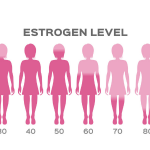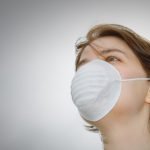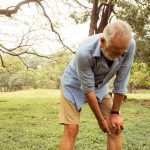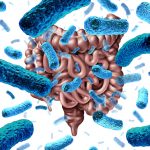Avoiding Thyroid Confusion: 10 Reasons for Thyroid Lab Fluctuations
ALAN CHRISTIANSON, NMD, FABNE
If you manage thyroid medications for your patients, you’ve probably seen their labs fluctuate unexpectedly. Most of us were not taught the reasons that thyroid levels would change aside from medications and internal thyroid output. Yet they do. This article will help you understand 10 additional confounding variables. By taking these into account, fewer changes in thyroid labs will be unexpected, and you will feel more confident in your ability to help these patients improve.
Lab Variability
No labs are perfect. If the same sample is analyzed twice, some inconsistency is expected. This is known as intrasubject variability. In the United States, thyroid-stimulating hormone (TSH) levels are read by 4 different chemical assays. The differences in variability from one assay to the next are not significant. Collectively, they have the following amount of intrasubject variability.1
- TSH < 0.4 = ± 0.19 IU/mL
- TSH 0.4 – 4.5 = ± 1.0 IU/mL
- TSH > 4.5 (Hypothyroidism) = ± 13 IU/mL
Note that the further the results are from normal, the larger the range of intrasubject variability. Imagine that your hypothyroid patient’s TSH went from 6 on one test to 19 on the next. A doctor could easily mistake it as disease progression or a poorer response to a new medication. In fact, such a change could be nothing more than lab variability. The lesson here is that it is important not to put too much weight on any single set of thyroid labs. The more the results deviate from past readings, the truer this becomes.
Disease Progression
Your patient’s endogenous thyroid output can change. Over time, they may produce larger or smaller amounts of thyroid hormone. Some specific diagnoses are more prone to fluctuations than others. Two conditions for which larger changes are common are subacute thyroiditis2 and Hashitoxicosis.3
The typical decline from Hashimoto’s thyroiditis to complete hypothyroidism can be surprisingly slow. In patients with antithyroglobulin and antithyroid peroxidase both over 500 IU/mL, there is only a 31% chance of progressing to complete hypothyroidism over a 9-year period.4 The chance of progression is even less likely for those with atrophic thyroiditis. Of course, this is not a consideration for athyreotic patients (those who have undergone complete thyroidectomy).
Pseudomalabsorption
Countless doctors have observed instances where thyroid levels failed to respond to an appropriate dose of medication. To them, it seemed as if the medication was not being absorbed.
A group of doctors at the Mayo Clinic tried to understand this phenomenon.5 They took a group of 13 patients who seemed to not absorb their medication. All had been previously given numerous brands of thyroid medication at dosages that should have been adequate, yet they remained hypothyroid. In the study, they were given a dose of medication under observation, then had their blood levels monitored for the next several hours. Of the 13 patients, 12 had perfectly normal absorption in a controlled setting. In the study’s conclusions, the doctors coined the phrase “pseudomalabsorption of thyroid medication.” The problem seemed like malabsorption, but this turned out not to be the case.5
If ever you suspect malabsorption, consider that poor compliance is a more likely explanation. Advise your patients of the importance of taking their medication away from everything except water, and at the same time each morning within a 1-hour window. Asking them to repeat back how they take their medication can reveal gaps in their understanding.
I had one memorable case many years ago. My patient was overtly hypothyroid despite taking a dose that was up to nearly twice that necessary. After the 3rd time I asked, she finally confessed that she did not take her thyroid medication every day, and when she did, it was with her orange juice. Even worse, it was calcium-fortified orange juice! (Remember, calcium is known to bind thyroid hormones.) If I had not known about the compliance issues and she did start using the prior dose correctly, she would have been at risk of thyrotoxicosis.
True Malabsorption
True malabsorption can occur. You can suspect it when a patient with known gastrointestinal illness remains hypothyroid despite taking a dose of medication higher than necessary. How can you know how high of a dose is expected? A handy estimate is ¾ of an mcg of levothyroxine (T4) per pound of body weight for those on a full replacement dose. For more precise numbers, consider these calculations:
- Menopausal women (not on hormone replacement therapy) and men require roughly 0.7 mcg of T4/lb.
- Menstruating women and patients on hormonal contraceptives or estrogen replacement require roughly 0.8 mcg of T4/lb.6
- Pregnant women require 0.8-0.9 mcg of T4/lb.7
For example, a 200-pound patient’s thyroid would ideally make about 150 mcg of T4 per day. If this patient were hypothyroid and taking 200 mcg of T4, pseudomalabsorption or true malabsorption should be considered.
When running this math for patients on other types of thyroid medication, first find their approximate needs in mcg of T4, then convert T4 to their type of medication. For desiccated thyroid, 100 mcg of T4 is roughly equal to 1 grain. For triiodothyronine (T3), 100 mcg of T4 is roughly equal to 25 mcg of T3.
True malabsorption can be suspected with known gastrointestinal illnesses such as:
- Short bowel syndrome
- Biliopancreatic diversion
- Gastric banding or bypass surgery
- Liver cirrhosis
In some cases, thyroid medication malabsorption can draw attention to undiagnosed gastrointestinal disorders.8 Some of these include:
- Lactose intolerance
- Celiac disease
- Helicobacter pylori infection
- Gastric atrophy
- Gastric motility impairment
Treatment options for malabsorption include newer liquid levothyroxine formulations available in capsules and single use oral vials. Tableted thyroid medication can also be crushed prior to ingestion. Overall, true malabsorption of thyroid medication is rare. Most individuals, even those with chronic conditions, absorb their medications just fine.
Conflating Peak and Trough Readings
Thyroid lab reference ranges are calibrated to a trough level, ie, before the patient took their medication that day. Peak levels are after the medication is taken. Peak T4 and T3 levels are difficult to standardize since intrasubject and intersubject variation can exceed 100%.9 Even if you know how many hours ago your patient took their medication, it is hard to give an exact range of expected blood levels. Peak vs trough levels usually have minimal effects on TSH levels, however.
The most common problem created by a confusion between peak and trough readings occurs when a patient’s medication includes T3. If T3 is measured on a non-trough reading, the T3 levels will appear higher than would be expected with a given the TSH.
Supplements
Many supplements are known to skew thyroid levels. Patients taking iodine and bovine thyroid tissue may have the most pronounced effects. Even a few micrograms of supplemental iodine can inhibit thyroid output via the Wolff-Chaikoff effect.10 It can also elevate thyroid antibodies, especially antithyroglobulin.11 In a subset of cases, iodine can cause sporadic surges of thyroid output via Jod-Basedow syndrome.12 There is no way to know which effect is occurring, if any.
Bovine thyroid tissue is found in many thyroid support products. Despite claims to the contrary, a recent assay found that most do contain high levels of T3 and/or T4.13 Even though many thyroid support products do not list bovine thyroid tissue as an ingredient, half of these products still show it is present on analysis. In all such products, the amount of hormone present is unlabeled and far too variable to be relied on.13 To best avoid this type of variation, advise your patients to stay away from iodine and thyroid glandular tissue in supplements. Ask for assays of active hormone in any thyroid support products you recommend.
Biotin
Many labs use immunoassay processes that can be skewed by recently ingested biotin. These include TSH, free T3, free T4, parathyroid hormone, troponin, Vitamin D, and dozens more.14 The most common pattern with biotin interference is a low TSH accompanied by normal or low T3 and T4 levels. This hyperthyroid patten is especially worrisome considering that biotin can also create false positive results for TSH receptor antibodies found in Graves’ disease.15 Because there is not a clear consensus for the minimum dosage required for this effect, advise your patients to avoid all supplements that include biotin for 3 days before thyroid labs.
Medication Substitutions
For most patients, the negative effects of inactive ingredients on absorption is predictable for specific medications. Levels can be titrated adequately if patients stay on the same medications. But when changing to a medication with different inactive ingredients, it may be necessary to start titration anew.
Generic medications come from multiple manufacturers, not all of whom use the same inactive ingredients. Suspect this reaction when blood levels change after a prescription refill. Better yet, use brand-name medications only and write your prescriptions for the pharmacist to “dispense as written” (DAW).
Menstruation
Thyroid hormones are inactivated by thyroid-binding globulin (TBG). As estrogen levels increase, so do TBG levels. Hypothyroid women on thyroid replacement may appear more hypothyroid during days 10-20 of their menstrual cycle.16
If your menstruating patient has unstable thyroid levels, consider testing only during menstrual cycle days 1-9 or 21-28. If their cycles are erratic, the easiest approach is to wait until their period starts, then test within the next several days.
Changes in Estrogen Status
Due to the previously explained issue with TBG, changes in circulating estrogen can influence thyroid labs. Consider this effect any time a patient starts or stops hormone replacement therapy or oral contraceptives.17 Based on clinical experience, a standard dose of estrogen in these preparations usually skews thyroid requirements by 25 mcg for T4 replacement or ¼ grain for natural desiccated thyroid.
Summary
Thyroid conditions comprise the most common autoimmune diseases among adults and thyroid cancer is one of the most rapidly increasing cancers among women. Patients with thyroid disease often need treatment for decades and commonly seek naturopathic care. As naturopathic physicians, we have a chance to make positive contributions to their lives. We need objective data from lab tests to adjust dosages and accurately track patient progress. Awareness of confounding variables can help clarify the data so that we can make better clinical decisions and treatments can be more effective.
References
- Spencer CA. The TSH Reference Range, What is “Normal” – And Why Does it Matter?. Presented at: The American College of Thyroidology Annual Meeting; May, 2021. Scottsdale, AZ.
- Samuels MH. Subacute, silent, and postpartum thyroiditis. Med Clin North Am. 2012;96(2):223-233.
- Caturegli P, De Remigis A, Rose NR. Hashimoto thyroiditis: clinical and diagnostic criteria. Autoimmun Rev. 2014;13(4-5):391-397.
- Ehlers M, Jordan AL, Feldkamp J, et al. Anti-Thyroperoxidase Antibody Levels >500 IU/ml Indicate a Moderately Increased Risk for Developing Hypothyroidism in Autoimmune Thyroiditis. Horm Metab Res. 2016;48(10):623-629.
- Gonzales KM, Stan MN, Morris JC 3rd, et al. The Levothyroxine Absorption Test: A Four-Year Experience (2015-2018) at The Mayo Clinic. Thyroid. 2019;29(12):1734-1742.
- Cheikh M, et al. Abstract #1104. Presented at: AACE 24th Annual Scientific & Clinical Congress; May, 2015; Nashville, TN.
- Kashi Z, Bahar A, Akha O, et al. Levothyroxine Dosage Requirement During Pregnancy in Well-Controlled Hypothyroid Women: A Longitudinal Study. Glob J Health Sci. 2015;8(4):227-233.
- Virili C, Antonelli A, Santaguida MG, et al. Gastrointestinal Malabsorption of Thyroxine. Endocr Rev. 2019;40(1):118-136.
- Jonklaas J, Burman KD, Wang H, et al. Single-dose T3 administration: kinetics and effects on biochemical and physiological parameters. Ther Drug Monit. 2015;37(1):110-118.
- Leung AM, Braverman LE. Iodine-induced thyroid dysfunction. Curr Opin Endocrinol Diabetes Obes. 2012;19(5):414-419.
- Duntas LH. The catalytic role of iodine excess in loss of homeostasis in autoimmune thyroiditis. Curr Opin Endocrinol Diabetes Obes. 2018;25(5):347-352.
- Rose HR, Zulfiqar H. Jod Basedow Syndrome. Last updated January 7, 2022. In: StatPearls. Treasure Island (FL): StatPearls Publishing; 2022 Jan-. Available at: https://www.ncbi.nlm.nih.gov/books/NBK544277/. Accessed January 30, 2022.
- Kang GY, Parks JR, Fileta B, et al. Thyroxine and triiodothyronine content in commercially available thyroid health supplements. Thyroid. 2013;23(10):1233-1237.
- Lundin MS, Alratroot A, Abu Rous F, et al. When thyroid labs do not add up, physicians should ask patients about biotin supplements. BMJ Case Rep. 2020;13(3):e231337.
- Favresse J, Burlacu MC, Maiter D, et al. Interferences With Thyroid Function Immunoassays: Clinical Implications and Detection Algorithm. Endocr Rev. 2018;39(5):830-850.
- Benvenga S, Di Bari F, Granese R, et al. Serum Thyrotropin and Phase of the Menstrual Cycle. Front Endocrinol (Lausanne). 2017;8:250.
- Mazer NA. Interaction of estrogen therapy and thyroid hormone replacement in postmenopausal women. Thyroid. 2004;14 Suppl 1:S27-S34.

Alan Christianson, NMD, FABNE, is a board-certified naturopathic endocrinologist who focuses on thyroid disease. He is The New York Times bestselling author of The Thyroid Reset Diet and is the founding president of both the American College of Thyroidology and the Endocrine Association of Naturopathic Physicians.










